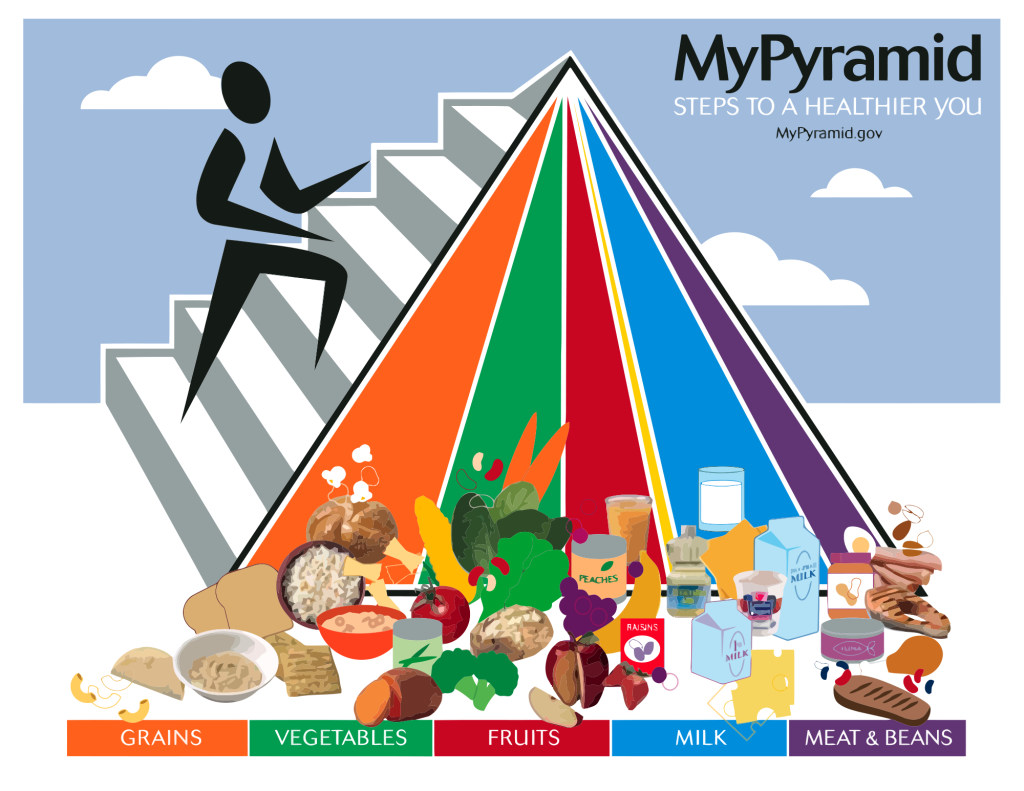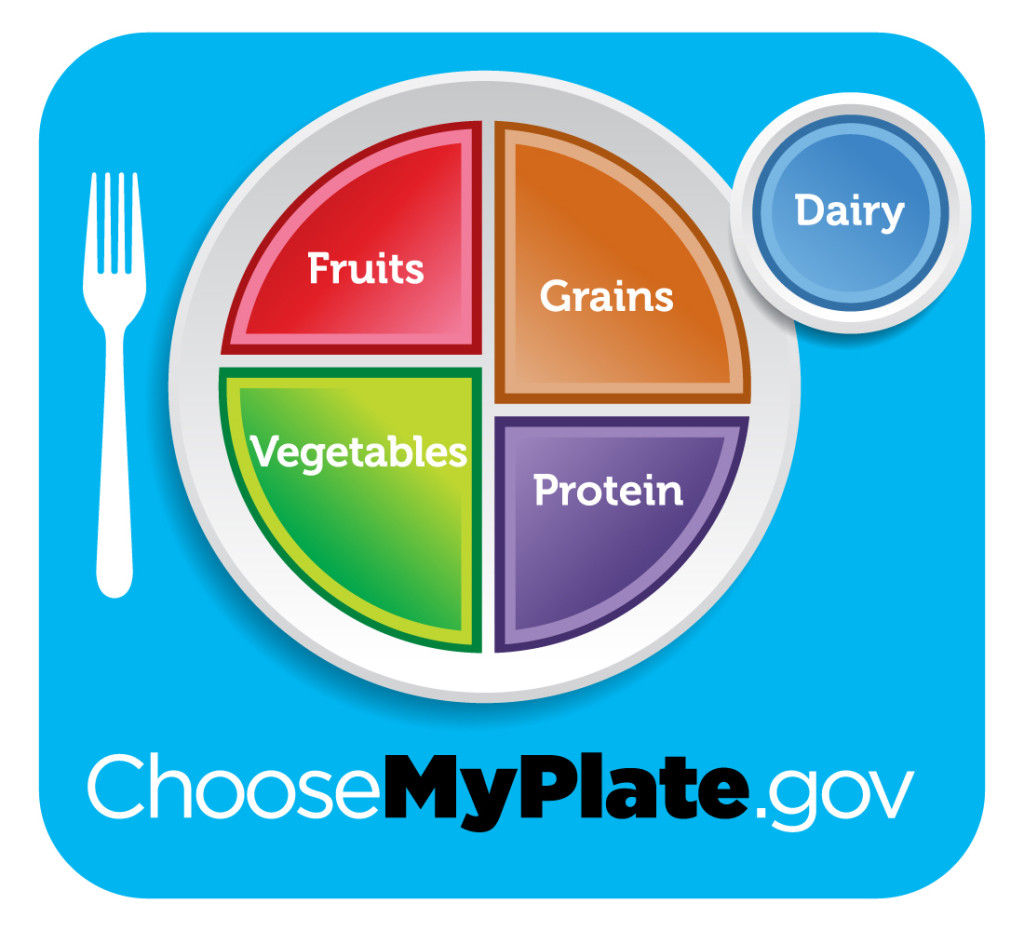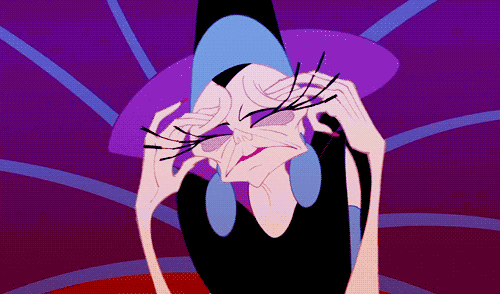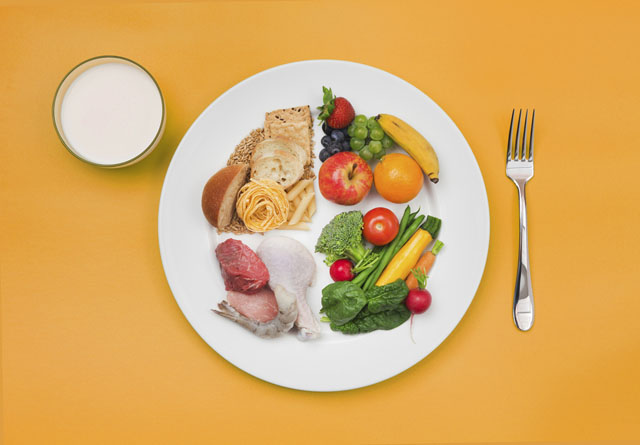Elementary school rocked — board games on rainy days (#SoCalLife), amazing field trips and so. Many. Carbs.
If you’ve taken a fourth-grade health class, chances are you’ve learned about the food pyramid.
Remember this?

Photo courtesy of mypyramid.gov
It was the most colorful document I received up to that point in academia, and it was the first document that taught me I could thrive on my then-diet of rice and stir fry. I was rice, the rice was me, and as one we were the shining paradigm of health, according to the US Department of Agriculture.
The USDA recommended 6-11 servings of bread, cereal, rice, and other grain-y goodness a day. I did my best. Life was wonderful. Carbs all day erryday.
So meeting a dietician nine years later was a little awkward.
“What do you usually eat?” she asks.
“A lot of carbs!” I cheerfully answer. “Like the food pyramid says!”
“They changed that years ago. It’s the healthy plate now.”
Apparently the USDA changed the food pyramid to the healthy plate in May 2011, but for people who took their last health class way before then (like me), the healthy plate is a foreign concept. Out of curiosity (and to honor the carb-fab lifestyle, RIP I will miss you), I investigated the healthy plate a little, and it’s actually so much better than the food pyramid.
Instead of the six food groups of the original pyramid, the healthy plate only talks about five: fruits, vegetables, protein, grains, and dairy. The first four each take up around a quarter of a plate, while the dairy is included as a cup on the side.
The food pyramid represents your ideal intake for the day, but the healthy plate is different. One plate is one meal, and that leads me to my first point about why the healthy plate is so much better…
1. It’s easy to understand.

Gif courtesy of imgflip.com
There is a clear connection between food and plate. You’re (hopefully) well-acquainted with a plate. You put food on your plate. Do you put food on your brightly-hued pyramid? Probably not as often.
2. It’s easier to use.

Photo courtesy of choosemyplate.gov
The directions for using the healthy plate are simple. You first take the plate and eyeball to see what a quarter of it is. Then you fill the plate with fruits, veggies, grains, and proteins. You finish off your healthy meal with a cup of dairy goodness. Easy peasy.
The directions for using the food pyramid are only slightly more complicated. You first take the plate and mentally transform the plate into a pyramid. Bonus points for actually making it 3-D! Then you start an Excel spreadsheet to track daily serving intakes. Next, you learn to tell how many ounces of grain make up each slice of bread. Finally, you lambast yourself for having 5.7 and not 5.5 ounces of protein. There goes a perfect day! You may now cry yourself to sleep tonight.
3. It’s very versatile.

Gif courtesy of thegiflibrary.tumblr.com
With the food pyramid, translating the serving sizes for a fully-grown man into the appropriate sizes for a little girl involved a formula*, two years of calculus, and a comprehensive Internet database of food with corresponding calories.
With the healthy plate, if you’re a little person, you use a little plate. Big grown-up people use big grown-up plates… unless you still really like those little plates with the animal ears and eyes that show up after you finish eating your food. It’s okay. #NotJudging
*Formula not provided.
4. It’s based on recent research.

Gif courtesy of giphy.com
The food pyramid was first established in 1992. The healthy plate comes nearly a decade later. As you can imagine, things have changed. Research has shown that some of the things that we were encouraged to eat—refined grains, red meat, and dairy—have negative impacts on our health when consumed in excess, and what qualifies as excessive has changed as well.
5. It sets more realistic expectations.

Photo courtesy of blisstree.com
The healthy plate diagram translates into your actual plate. No more pyramid-to-circle conversions, which transcend dimensions and the limits of your patience. And approximate portion sizes = lower guilt levels = win.
The healthy plate is pretty great. It taught me to love veggies as much—if not more—than carbs. But if you still need help eating more veggies, check out this article.
And it taught me, too, that eating healthy doesn’t always need measuring cups, teaspoons, and tears; it’s just knowing the basic guidelines for what to eat, how to eat it, and making sure to enjoy yourself in the process. If you really just can’t let go of the food pyramid, though, you can try a challenge here.


